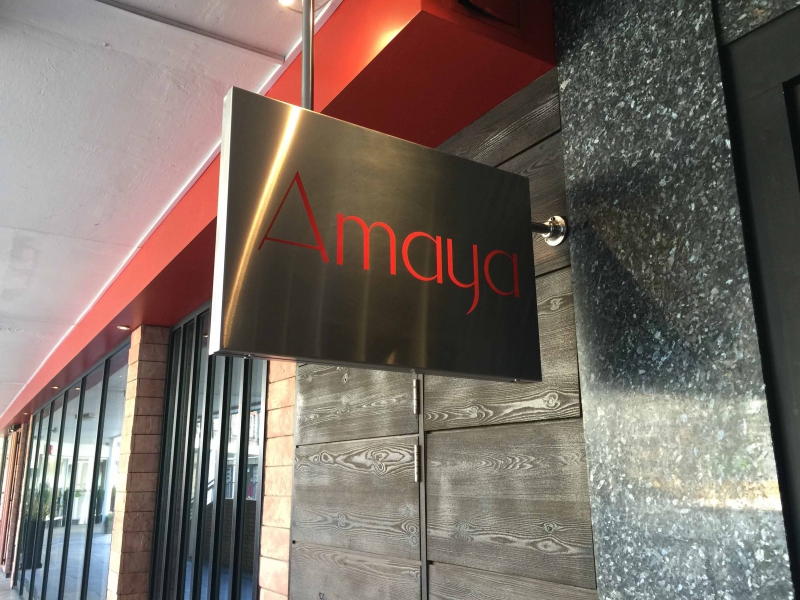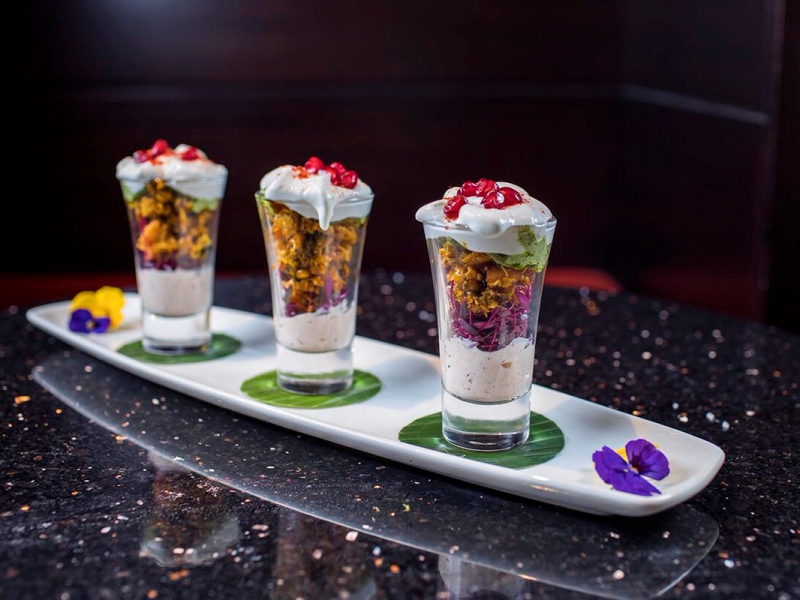Although Indian and Pakastani immigration to England had flourished under British Colonial Rule, it was after World War II and the breakup of the British Empire that the numbers dramatically increased…mainly from the Punjab region.
Today, some 300,000 Indians reside in London alone.
Lucky us. Joanne and I love the variety of cuisines that India has to offer. And while no major markets in the United States – except perhaps New York – have embraced any form of Indian polished dining, London is thriving.
Due to our ongoing research, particularly for CHINO LATINO, Joanne and I have been fortunate over the years to sample and screen the best of the best for you. So if anyone out there is contemplating a trip to London, stay tuned.
These are all good. They’re all different, yet all about the same price. Some have Michelin stars.
Our first experience in London was THE BOMBAY BRASSERIE in Kensington – still going strong since 1982. TAMARIND, near Green Park is as noisy as it is buzzy, so try to get a table on the perimeter. CHUTNEY MARY, also near Green Park, remains excellent – although in this newer space the restaurant seems to have lost some of the ambience from its previous spot in Chelsea. A sensational newcomer is JAMAVAR, on Mount Street, right in the heart of Mayfair. Get table #16….a corner table for two.
ZAIKA on Kensington High Street focuses on the cuisine of Northern India, so you can expect rich and fragrantly spiced fare. THE CINNAMON CLUB offers a vast selection of sharing plates, so dining is a little different here.
But now I’m going to compare two different experiences – not better or worse, simply different. Both are Michelin starred. You decide what’s best for you…… GYMKHANA or AMAYA.
The first stop is GYMKHANA on Albemarle Street, near the Ritz. It’s a tough, tough reservation to snag, so be sure to enlist the help of your hotel concierge well in advance of your trip. Request one of the downstairs leather-upholstered booths with the hammered brass table tops (pictured). Expect powerful, punchy flavors served up in a space that evokes the Old Colonial glamour of India’s Gymkhana, or sports, clubs. Dishes not to be missed include Methi Keema, or kid goat, served in the form of spicy Sloppy Joe-style DIY sliders, meant for sharing (about $16.50 in U.S. currency). We also loved the Tandoori Wild Tiger Prawns with red pepper chutney and the Guinea Fowl Tikka with fig and onion chutney (about $28).
It was October and game played a role in many of the dishes offered at Gymkhana. A favorite, presented table side, was the Wild Muntjac (venison) Biryani baked in a pastry-sealed pot with a cooling counterpoint of pomegranate raita ($36). For a show-stopping fall vegetarian offering, get the Wild Morel Mushroom and Truffle Pilau (rice pilaf) at $28.
I ordered and did not share the Sofiyani Murgh Tikka and Sweet Tomato Chutney…oh hell, why don’t they just say “Tandoori Chicken with Black Cumin and Tomato Chutney”???
And that’s one of the things that troubled me about Gymkhana: their slavery to authenticity in ways that frustrate rather than intrigue or delight. I’m all for un-dumbed-down flavors that remain true to their origins – and as far as I know, each dish fit that bill. Everything we tried was very, very good.
But in a restaurant that caters to a primarily non-Hindi-speaking clientele (based on the mix of our fellow diners), the lengthy menu written almost entirely in Hindi, without translation, has to be as irritating for the servers as it is for the diner. It required several trips on our waiter’s part to come to our table and translate. Why couldn’t we simply choose and order without subjecting him to a never-ending series of questions and translations? The frenzied nature of the dining room didn’t help either.
Don’t’ get me wrong: The food at Gymkhana is really, really good. It deserves a Michelin star. And if you don’t mind noise and frenzy (in the business, we call that “energy”), then book a table at Gymkhana. You’ll love it – especially if you speak Hindi.
Now, on to another Michelin-starred Indian restaurant: AMAYA.
My first experience with Amaya, in the pre-iPhone era, did not end well. While using a regular camera to photograph my food, I was approached by a manager who rather rudely and forcefully told me to stop, and to stop NOW. I questioned him as to who this food actually belonged to now that I was eating it. “Does it belong to you? Or does it now belong to me?”
I answered for him: “I think this plate of food now belongs to me. So as far as I’m concerned, you can go to hell!”
So we left.
Did that make me an ugly American? (Joanne would answer in the affirmative.)
But not being ones to hold a grudge (and being culinary whores for whom food trumps any sense of embarrassment), we’ve returned several times over the past few years. Plus, they appear to have thrown in the towel on food photography.
And the food here is superb – perhaps more refined than Gymkhana, possibly not as purely authentic, maybe with a flavor profile geared more to a western plate. The space, with its sultry lighting, sophistication and open kitchen theater (with plenty of shooting flames) is sleek, chic and current. Request table numbers 17 or 19. They are both “anchored” and are just far enough away from the radiant heat of the grill and the ovens.
The restaurant describes itself as “An Indian Bar & Grill” – and that it is. Yes, they have curries and biryanis, but the grill and tandoor ovens occupy center stage. Grilled Punjab Chicken Lollipops ($18) and the Tandoori Chicken Chops in a Green Curry Marinade proved to be worthy of their cooking methods. You must also try the obligatory Naan Bread from the tandoori ovens. It’s served with a four-compartment spice tray housing Rose Petal Coriander, Peanut Dust, Tomato Chutney and Plum Chutney. The Minced Tandoori Chicken Lettuce Wraps were constructed two ways – one open-faced, the other rolled up. Coconut and Lime Sauce brought them vividly to life ($11.50).
I couldn’t finish without mentioning the Tandoor Lobster. I forget the price. I’m sure it’s expensive as hell. But on what other occasion will you have lobster prepared this way? Share it as an appetizer. DO!!!
Don’t pass up dessert, either. Get the Green Tea Kulfi (ice cream) or the Liquid Chocolate (in a previous post, I quoted Calvin Trillin stating that “all Indian desserts have the texture of face cream.” Has anything changed? HMMMM??)
So there you have it: GYMKHANA and AMAYA. Remember…they both sport a MICHELIN STAR.
You cannot go wrong with either. Maybe even try ‘em both.
W.T.F.











